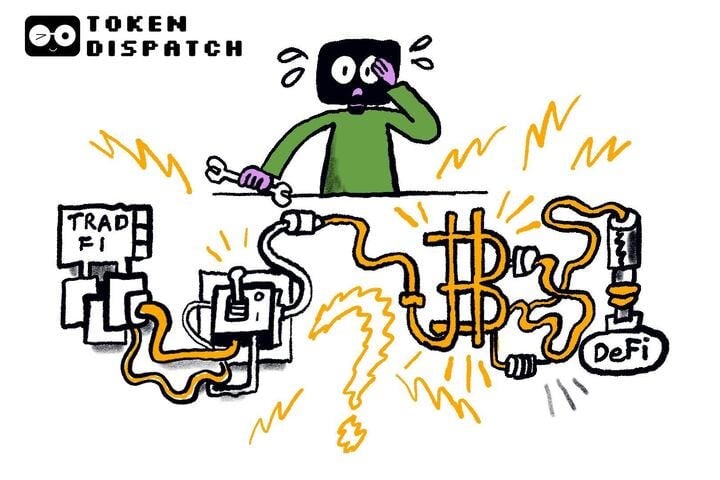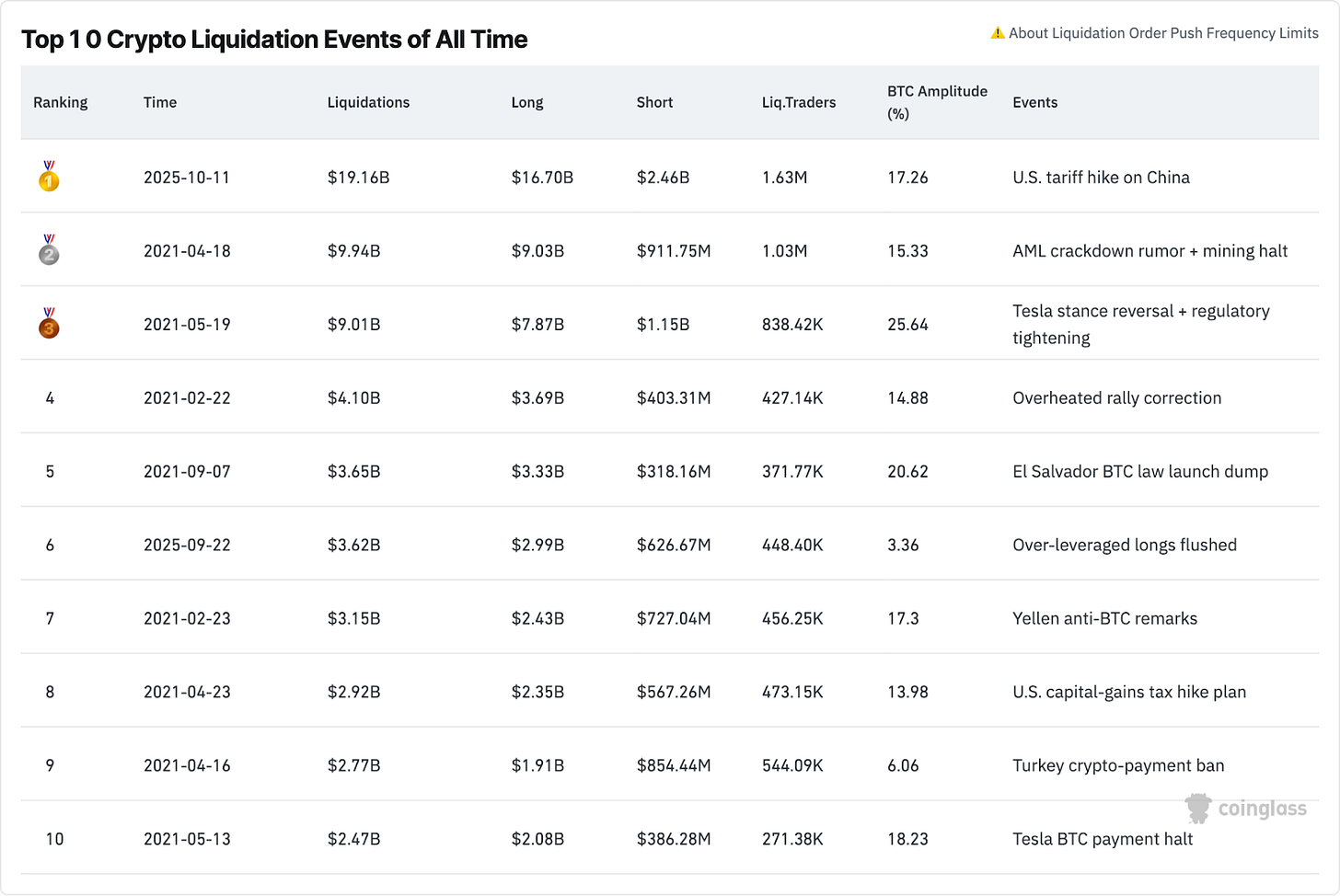Author: Prathik Desai, Token Dispatch
Compiled by Luke, Mars Finance
The screens went blank, and people were still trying to process what had happened. It was Monday, October 19, 1987. The Dow Jones Industrial Average plummeted more than 22% in a single day. Phones fell silent, and traders' words froze in their tracks. More than a fifth of the market's value had been wiped out.
At the time, the market was still unfamiliar with the concept of "program trading," but the machines continued to sell even after the humans stopped. By the closing bell, $500 billion in value had vanished in the United States alone. Globally, the total evaporated reached $1.7 trillion. Adjusted for inflation, this figure would exceed $4.7 trillion today—more than the current GDP of Germany, the world's third-largest economy.
That day gave rise to the circuit breaker—a pause button that not only helped correct prices but also bought the market time and slowed everything down. It was a mechanical solution to a human problem few knew how to solve: panic. Philosophically, the circuit breaker taught us a lesson: sometimes, the only way to survive chaos is to stop and take a breath.
Nearly four decades later, I find myself staring at a smaller screen, surrounded by a different kind of silence. It's a Friday night, halfway through a bowl of snacks, and a random episode of "The Big Bang Theory" is paused mid-screen. For hours, notifications keep popping up: BTC drops 3%... 7%... 10%. By the fifteenth minute, the chart looks like it's in free fall. This happened after US President Donald Trump announced a new round of trade tariffs on China.
That night, I didn't watch any of the 10,000 movies I vowed to see. Instead, I witnessed $19 billion being wiped out in real time. It became the worst liquidation event in crypto history. Bitcoin plummeted from $122,000 to nearly $105,000. Many altcoins fared even worse.
Traders in New York, Seoul, London, and Mumbai are all making the same calculations, albeit in different time zones. The blockchain never sleeps, and neither do the traders.
In 1987, people built a switch to slow the panic. In 2025, we have a market that can't be turned off.
This is what I’ve been thinking about lately: Can a market that is inherently “never-stopping” ever justify a “pause button”?

Circuit breakers were born from the idea that markets, like people, need a break. Black Monday in 1987 ushered in a series of amendments: thresholds, limits, and 15-minute pauses. Later, after the 2010 flash crash, regulators added limit-up/limit-down rules to prevent individual stocks from spiraling out of control. In March 2020, as the panic over COVID-19 gripped Wall Street, these rules were triggered four times in ten days, arguably preventing a stampede from escalating into a run on the entire system.
Each amendment relies on the same architecture: one exchange, one rulebook, and a unified clock. In crypto, we don't even have a unified clock, let alone a unified exchange. There's no opening or closing clock. If someone wants to unplug it, they probably can't even find it.
While the tariff threat lit the fuse, the real fuel was the overheated long positions that had piled up over the past few weeks. In just a few hours, open interest fell by nearly a third.
In total, at least $19 billion in positions were forced to liquidate, the majority of which were long positions. In the stock market, this would have triggered at least two trading halts and a restart auction. In the crypto world, it simply triggered panic among investors, who knew there was no "limit down" option to save them. They could only watch helplessly as crypto's worst liquidation event unfolded while the code continued to perform its programmed task.

@Coinglass
Every historic crash elicits the same instinctive reaction from the trading community: someone has to do something to prevent it from happening again. This expectation is entirely reasonable. Circuit breakers reassure traders, mitigate vicious feedback loops, provide institutions with the comfort of rules, and buy everyone involved time to "respond" rather than "react."
So, when Evgeny Gaevoy, CEO of market maker Wintermute, advocates for the introduction of circuit breakers in the crypto space, we understand his intentions. But the bigger dilemma is: who should actually press the emergency stop switch?
Introducing circuit breakers in the crypto world is both a technical nightmare and a philosophical intrusion.
First, imagine a scenario: centralized exchanges (CEXs) like Coinbase and Binance implement circuit breakers to prevent extreme liquidation events. While tens of thousands of users on the CEXs are locked out, thousands more users on decentralized exchanges (DEXs) continue to be liquidated.
Secondly, considering the promise of decentralization, isn't the entire point of the crypto market so that no single person or authority can unilaterally decide when you can trade, stake, or exit? Doesn't introducing circuit breakers defeat the purpose of cryptocurrency by introducing "permission" into a market that should be permissionless? Traditional markets operate in a centralized manner, so coordinating a "pause" is easy. But how do you coordinate across geographically dispersed CEXs around the world, let alone DEXs that operate continuously with each new block?
So what's the way out? Does this mean we have to "run naked" in the storm? I don't see an easy answer, but stronger "protections" rather than "permissions" may be part of the solution.
The crypto market already has some forms of protection in place. For example, mark-price liquidation logic prevents margin calls from being triggered by a single price falling below a required margin level. There's also dynamic margining and auto-deleveraging, which gradually reduce leverage rather than causing it to plummet. Another is auction-style spreads, which enhance liquidity during periods of volatility.
These measures act as checks rather than pauses, and they respect the ethos of decentralization because they rely on adaptive algorithms rather than intervention by authoritative bodies.
DeFi has evolved and seen some unique forms of protection. The proposed ERC-7265 "circuit breaker" standard automatically slows withdrawals when outflows exceed a threshold. It also provides lending protocols with an "emergency mode," allowing them to freeze specific markets without freezing the entire system. I believe these are still imperfect in terms of respecting the spirit of decentralization, but they demonstrate that security can be coded in without ceding absolute control.
We’ve seen what happens every time someone tries to “pull the plug” in the crypto world.
BitMEX’s maintenance outage in March 2020 acted as an unexpected circuit breaker, likely preventing Bitcoin from falling below $3,500. But it also served as a reminder to everyone in the market that a single exchange could halt what was once the world’s largest crypto derivatives market.
Solana’s multiple validator-coordinated restarts, while preventing contagion, also undermined its decentralization narrative, something that still plagues the chain today.
Every pause in the crypto world takes effect immediately but backfires later. This is because, in the crypto world, the first question in the minds of stakeholders is always: "Who gave you the power?"
So, in a crisis, how do we resist the urge to let old instincts take precedence over the new spirit?
Traditional markets evolved to protect investors from one another, while cryptocurrencies were conceived as an antidote to the many problems plaguing them. The impulse for a "pause" stems from the former, and while perhaps well-intentioned, the trade-offs offered by borderless, permissionless markets are so alluring they're hard to resist. But it's precisely the fragility of this absolute freedom that drives this debate.
The “middle way” may not be to completely suspend the code, but to implement “speed reduction mechanisms” through dynamic collateral ratios, rolling auctions, and cross-venue etiquette.
Hasty solutions, such as partially halting trading on CEXs, only introduce new risks. Halt one exchange while another might still be trading. You can’t have a decentralized market that can only be controlled by the whims and impulses of a few.
Back in 1987, that event spawned the circuit breaker mechanism, which ultimately saved the market from collapse countless times in the future. The crypto industry's "business plan" is to build a market that can survive a crash. Our challenge is to design a way to achieve this goal without following the traditional market's path.







